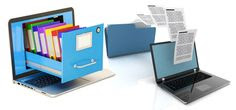EXCHANGE RECOVERY USEFULNESS


Everyone uses digital storage media. Whether it is a laptop, PC, external hard drive, smartphone, and USB or photo camera. We all have to deal with the fact that these media on which data is stored no longer work properly, so that you can no longer access your data: data loss. This could be because something happened, intentionally or accidentally. After all, they remain consumer items. The tips below are intended to extend the life of the storage media you have purchased. And what to do if it has already gone wrong?
Tips To Avoid Data Loss
Tip 1: Never store your data on a single media carrier.
Tip 2: Make multiple copies on different types of storage
media.
Tip 3: Take care of your media carrier, make sure that your
external media does not run the risk of falling off a table, for example.
Tip 4: After you have made a backup, check whether it was
actually successful.
Tip 5: Do not leave your external media carrier on 24/7,
switch off the external media and disconnect the unit if you no longer need it.
Tip 6: Do not disconnect the external storage media when it
is still in operation, wait until the external storage media is no longer
active.
Tip 7: Do not place your external storage media in a
closed, damp or dusty space, but in a safe place with good ventilation.
What can you do in case of data loss?
Did
you drop your external media carrier?
Do not panic, but test once if the media carrier is still
functioning, if the media carrier is still accessible, make a copy of your data
as soon as possible! If your media carrier no longer functions and produces ticking
noises, please do not restart your defective media carrier to limit damage to
your data.
Has
your external hard drive failed due to a short circuit?
You can have a computer expert expertly remove the hard
drive from the external case and attempt to boot your hard drive through a
direct connection directly to your computer. As soon as the hard drive is
accessible, immediately make a copy of your data. If your hard drive is no
longer recognized, we recommend that you do not restart the hard drive in order
to avoid possible damage to your data.
Have
you accidentally erased or formatted your data on the media carrier?
Don't panic, there are several programs to recover your
data. If you have no experience with the use of data recovery programs, we
recommend that you have this done by a specialized company.
Has
your external hard drive spontaneously rattled or ticked and your external hard
drive is no longer visible on your computer?
Switch off the external media immediately and try once or
twice to boot the media carrier, do you still hear ticking or rattling noises
and your external hard drive is still not recognized by your computer or
another computer? Then turn the unit off immediately to prevent further damage
to your data.
Have
you accidentally connected your external hard drive with the wrong power cable
and has made your external media carrier inaccessible?
Connect your media carrier with the correct power cable. If
the external hard drive is still not recognized, please disconnect the hard
drive immediately to avoid further damage to your data.
Comments
Post a Comment